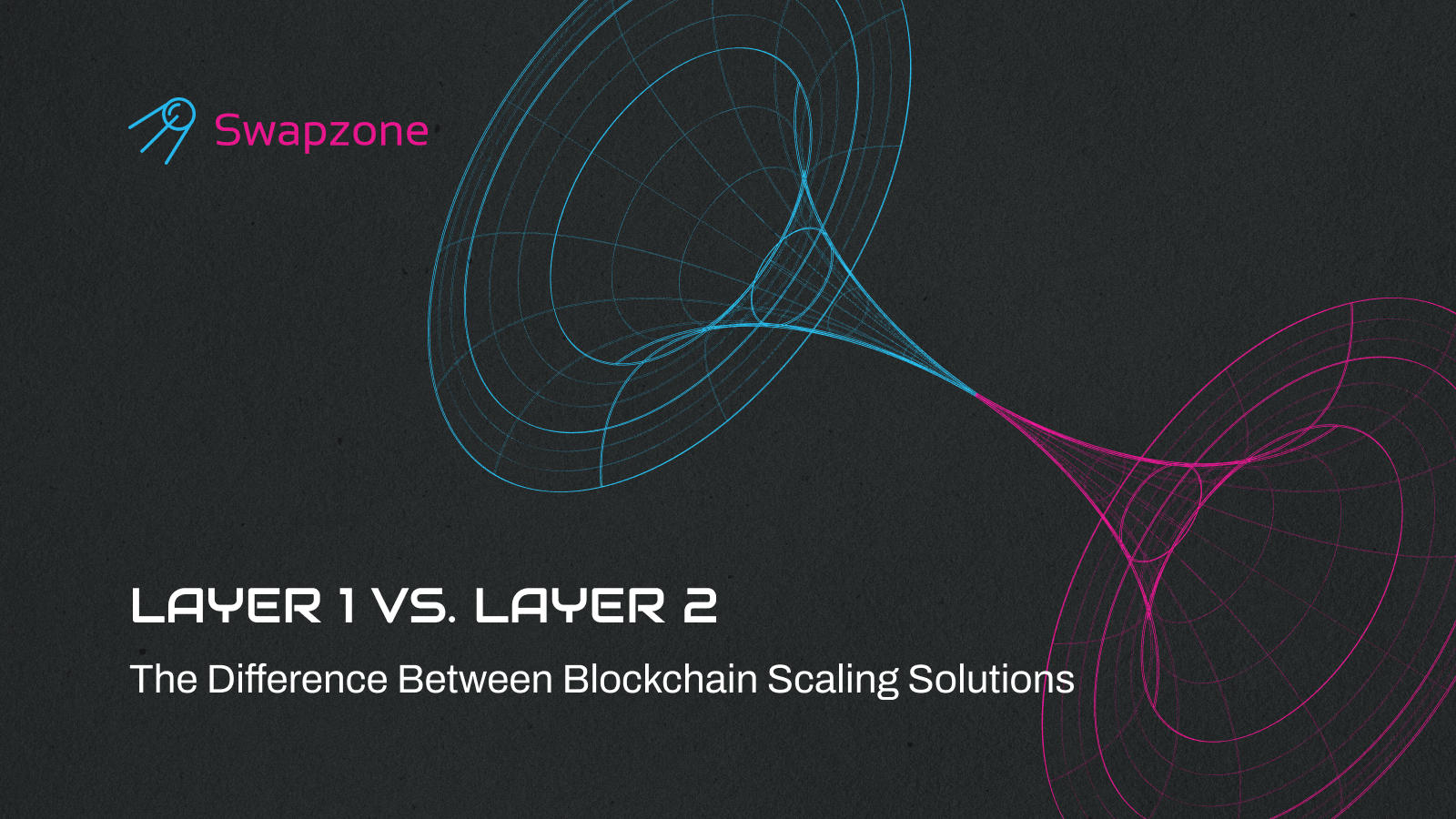Some skeptics often say that cryptocurrency is a complicated topic that beginners will not be able to understand without the help of specialized experts. This is actually not true at all, and basic knowledge of cryptocurrency can be gained even by a new user. However, when you start delving further into this industry, you will be faced with more and more complex and unknown terms.
You must have come across early terms such as «Layer 1 and Layer 2”. Many people who are involved in cryptocurrency still don’t know what they actually mean and what impact they have on scalability. This article will help you learn more useful information about the difference between Layer 1 and Layer 2, and how they affect overall bandwidth.
Blockchain Trilemma
Before delving into the key differences between Layer 1 and Layer 2, it is important to take a look at the trilemma of the blockchain. This is the exact thing why Layer 1 and Layer 2 exist. This is the term used to describe the problem that blockchain developers and engineers face. This is all due to the fact that a distributed network is characterized by 3 main factors that are immutable:
- Decentralization. This is the main point that characterizes blockchain. It means that no one can get 100% control over a particular system.
- Security. Another important component of the system ensuring that the network will remain secure for users.
- Scalability. The third item called scalability defines how many transactions can be processed in a given period of time.
All of these components in combination provide the network with guaranteed success. However, the trilemma of blockchain implies that one of the important components is always missing. Developers have to sacrifice one thing to get another.
What is Layer 1 in Cryptocurrencies?
Layer 1 is one of the structures in the blockchain technology that refers to the fundamental protocol that is employed in the system. In fact, it incorporates the basic blockchain functionality, which consists of four layers of architecture.
- Data level. All transactions and all related information are allocated in this separate level.
- Network level. The entire blockchain is a multitude of distributed network devices, computers and facilities that are interconnected. All of this is emphasized in the network level.
- Consensus level. There are different consensus levels that include different mechanisms. For example, the most popular mechanisms are Proof of Work (PoW) and Proof of Stake (PoS).
- Activation Level. This is a level that is separate and includes the functionality to distribute the reward to validators.
The scalability problem has been solved here by increasing the blocks. This means that the system can handle more transactions. It is on this that decentralized applications, smart contracts, and tokenization platforms are developed. This layer of the blockchain performs activities such as processing of transactions, storing data, and consensus algorithms that help participants in the network to trust it.
Examples of Layer 1 Usage
The best way to understand any topic in detail is to see concrete examples and understand how it works in a real case. Below you will see some well-known examples for Layer 1.
Bitcoin
The first and the biggest distributed ledger that has been created to support the flow of digital money. They implemented the use of smart-contracts such as blockchain ledgers, distributed consensus, and proof-of-work mining to facilitate the use of electronic cash without the intervention of a third party like a bank.
EOS
Introduced more complex scripting language to its Layer 1 that would allow decentralized applications (DApps) and smart contracts. Unlike traditional systems that may be altered by bugs, malicious actors, or other external interference, coded agreement protocols and dApps on the Ethereum platform operate strictly as programmed, with no possibility of halting, corruption, or manipulation by third parties.
Solana
This aimed at maximizing transaction speed as well as the network’s capability by utilizing Proof of History consensus mechanism in addition to PoS voting system and Distributed System architecture. Solana boasts of being capable of processing over 50 thousand of transactions.
What is Layer 2 in Cryptocurrencies?
Layer 2 solutions are meant to provide users with higher throughput, cheaper fees, and scalability without compromising the security of underpinning layers such as Ethereum. Layer 2 systems process transactions of Ethereum’s chain first before being incorporated into the main chain. They group transactions together, then stake them on to the main Ethereum network in block-chains. It also means that the main chain does not need to perform all the computations, thus, passing the ample load to the Layer 2 systems.
There are Layer 2 solutions that utilize new consensus algorithms for low-cost and fast transactions and security from the main chain through roll-ups of the Merkle root into the chain. Some others are entirely dependent on the consensus mechanism adopted by the main chain, which may be a proof-of-work or proof-of-stake system. These innovations are crucial for the efficiency and effectiveness of a cryptocurrency exchange.
Examples of Layer 2 Usage
The topic of comparing Layer 1 and Layer 2 may seem difficult to many people and that is quite normal. It is recommended that newcomers learn the basic terms and also look at real examples of these systems. Here are what famous examples of Layer 2 exist in 2024:
Polygon
Polygon makes an easy entry to Ethereum’s Layer 2. It has a system of side chains that are linked to the Ethereum parent chain but makes it possible for the transactions to be processed at a faster rate with a lot of efficiency at a lower cost. The scaling options people have for their projects depend with the type of scaling solution required.
Bitcoin Lightning Network
The Lightning Network is an extension of the Layer 2 payment protocol for use on the Bitcoin blockchain. It allows for near-instant and almost unlimited payment transactions through payment channels that settle most transactions between users of the blockchain. One of them is high transaction throughput and privacy with almost no fee.
Scroll
Scroll’s architecture, which is based on an off-chain network for real-time, cost-free transactions and an on-chain consensus mechanism for Internet-scale integration. The off-chain network reports small payments instantly for free by leveraging participant reputation within trusted social networks as opposed to universal consensus.
Detailed Comparison of Layer 1 and Layer 2
Blockchain is a distributed and decentralized ledger that can revolutionize the way transactions are carried out by ensuring their transparency while promoting the virtues of decentralization, security, and the absence of intermediaries. Still, the first generation of Layer 1 blockchain such as Bitcoin and Ethereum, has some scalability problems when the number of users is large. This has led to the emergence of Layer 2 solutions, which are more complex than those in Layer 1. But before we get into that, let’s look at how Layer 1 and Layer 2 blockchains are different.
Scalability
Layer 1 blockchains are composed of one chain comprising a sequence of blocks with data about transactions. Each node must approve all transactions. In turn, this severely slows down the transaction rate and capacity. Compared to Bitcoin, which is capable of processing 7 transactions per second, Ethereum can only handle 25. Layer 2 solutions, on the other hand, are constructed on Layer 1 chains, that are just above the physical layer. This allows for a significantly increased throughput – for instance, Loopring notes that they are capable of processing 2000+ transactions per second.
Security
The first layer chains, such as Bitcoin and Ethereum, possess a high level of security as they both operate on global networks with consensus algorithms. Nevertheless, Layer 2 solutions never lose security, as they integrate the security of the L1 chains they are based on. Through pushing the withdrawal transactions to Layer 1, the L2 platforms get the advantage of using the security from the root chain. While not as fully decentralized as Layer 1, Layer 2 solutions boast robust security while enjoying the ability to scale significantly.
Mechanism of Consensus
Layer 1 blockchains are the leading ones, which work on either Proof of Work or Proof of Stake to authenticate the transactions. Both require energy-intensive computing. But Layer 2 platforms can sort, verify transactions away from Layer 1 and submit a proof of validity, known as zero-knowledge rollups. This means that there is no need for performing numerous calculations which are possible at much higher efficiency. For instance, Polygon PoS chain, integrates Ethereum security with a PoS consensus model that can support quicker transactions for significantly lower costs.
Size of Commissions
While comparing L1 and L2, there is a difference regarding the number of fees/commissions needed to make the actual transactions. Layer 1 is the base of the blockchains, such as Ethereum, which is a solid foundation that is used. Performing transactions on Layer 1 blockchains generally costs more due to the contest for the accessible bandwidth on the base infrastructure. For instance, gas prices – which are fees for executing operations on the Ethereum network – tend to rise during traffic.
On the other hand, the Layer 2 platforms are established above the Layer 1 to help with the scalability issue. Layer 2 solutions such as Arbitrum allow for transactional batching “off-chain” before being permanently written on the main network; this significantly lowers the cost. In sum: Layer 2 significantly reduces commissions by easing the pressure of transaction volume on Layer 1.
Throughput Capacity
One related difference is that of the network bandwidth and capability that the two options employ. Layer 1 has predetermined number of bandwidth by core developers. Due to MTP rates limitations, high usage of Layer 1 causes traffic and costs for consumers.
Layer 2 technologies are mainly focused on increasing the bandwidth. Optimistic Rollups scale transactions «off-chain» before summarizing and reporting the outcome back to Layer 1, enabling higher TPS. Consequently, Layer 2 desires superior bandwidth and, thereby, eludes the constraints and expenses associated with various Layer 1s functioning at or near capacity.
Final Thoughts
As mentioned before Layer 1 and Layer 2 are the two primary methods to increase the blockchain network size and consequently, the transaction throughput and fees. Of course, each option has its own advantages and disadvantages.
It is not hard to guess that Layer 1 is the foundation, and among its representatives are such giants as Bitcoin, Ethereum, Solana, and others. However, Layer 2 solutions help to find a compromise when it comes to blockchain thrillers. Based on this article, you already know about well-known projects like Bitcoin Lightning Network, Scroll, and Polygon. They have proven that scalability and a high number of transactions per second are affordable things for any project. However, this can be a drawback when it comes to decentralization since corporations and banks, for instance, may own several nodes or hubs. Implementation of such scalable solutions is best suited to help drive relevant innovation and positively impact blockchain performance. This can be beneficial for both developers and ordinary users of the cryptocurrency exchange.


